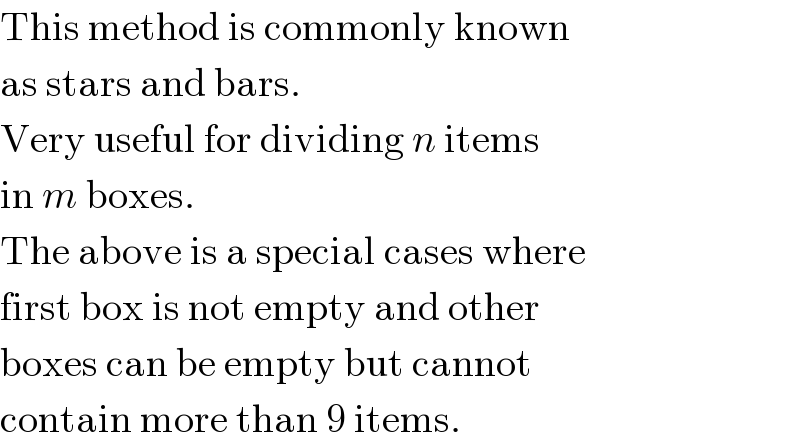
Question and Answers Forum
Previous in Permutation and Combination Next in Permutation and Combination
Question Number 102816 by mr W last updated on 11/Jul/20
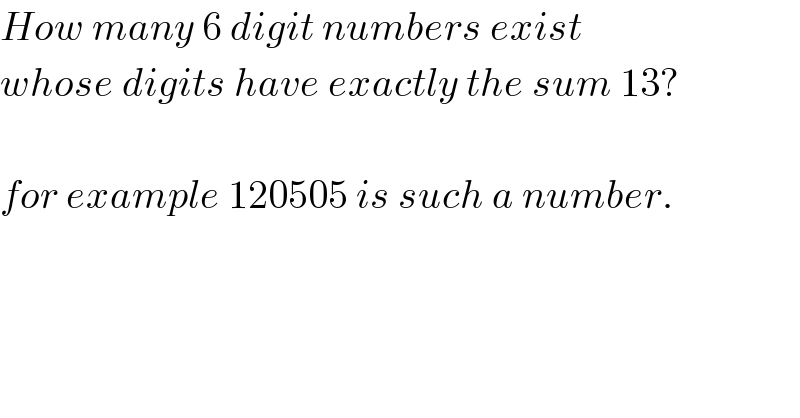
Commented by Rasheed.Sindhi last updated on 11/Jul/20

Commented by aurpeyz last updated on 11/Jul/20

Commented by mr W last updated on 11/Jul/20

Commented by mr W last updated on 11/Jul/20

Commented by Rasheed.Sindhi last updated on 11/Jul/20
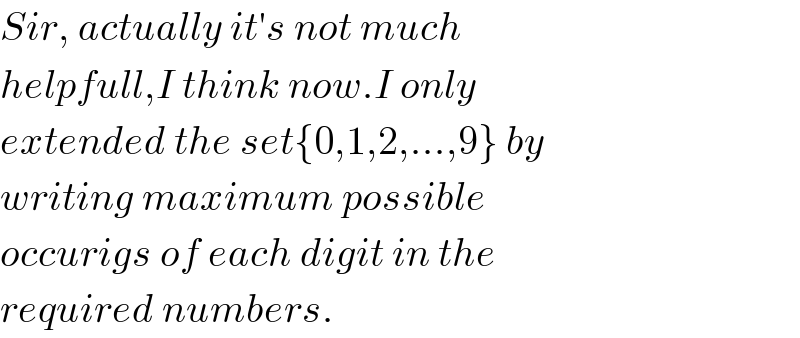
Commented by mr W last updated on 11/Jul/20

Commented by Rasheed.Sindhi last updated on 11/Jul/20
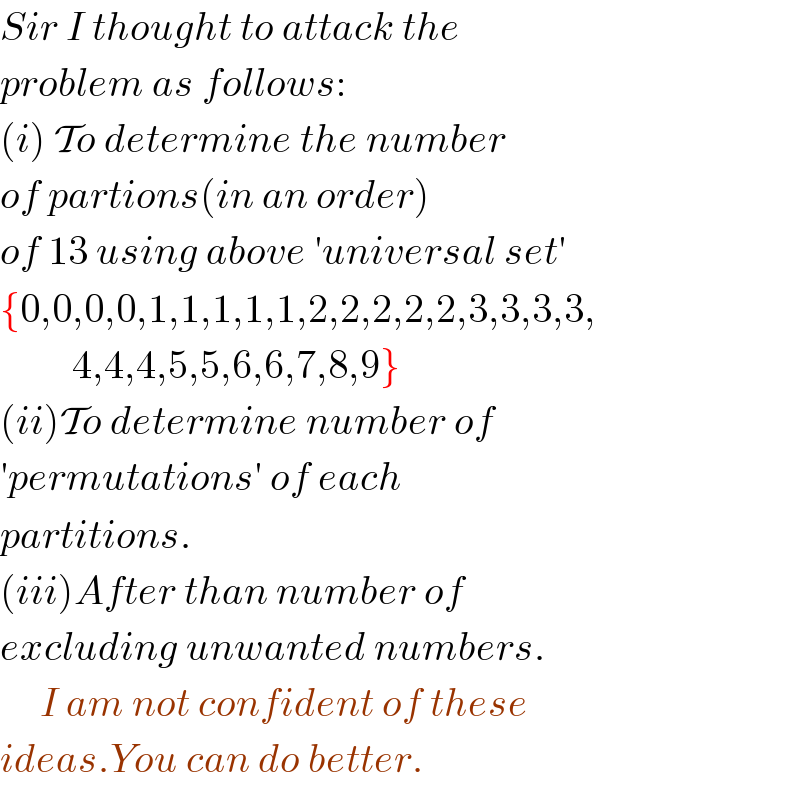
Commented by prakash jain last updated on 11/Jul/20
This method i think is known as generating function method, used in problem involving coins etc.
Commented by prakash jain last updated on 11/Jul/20

Commented by PRITHWISH SEN 2 last updated on 11/Jul/20
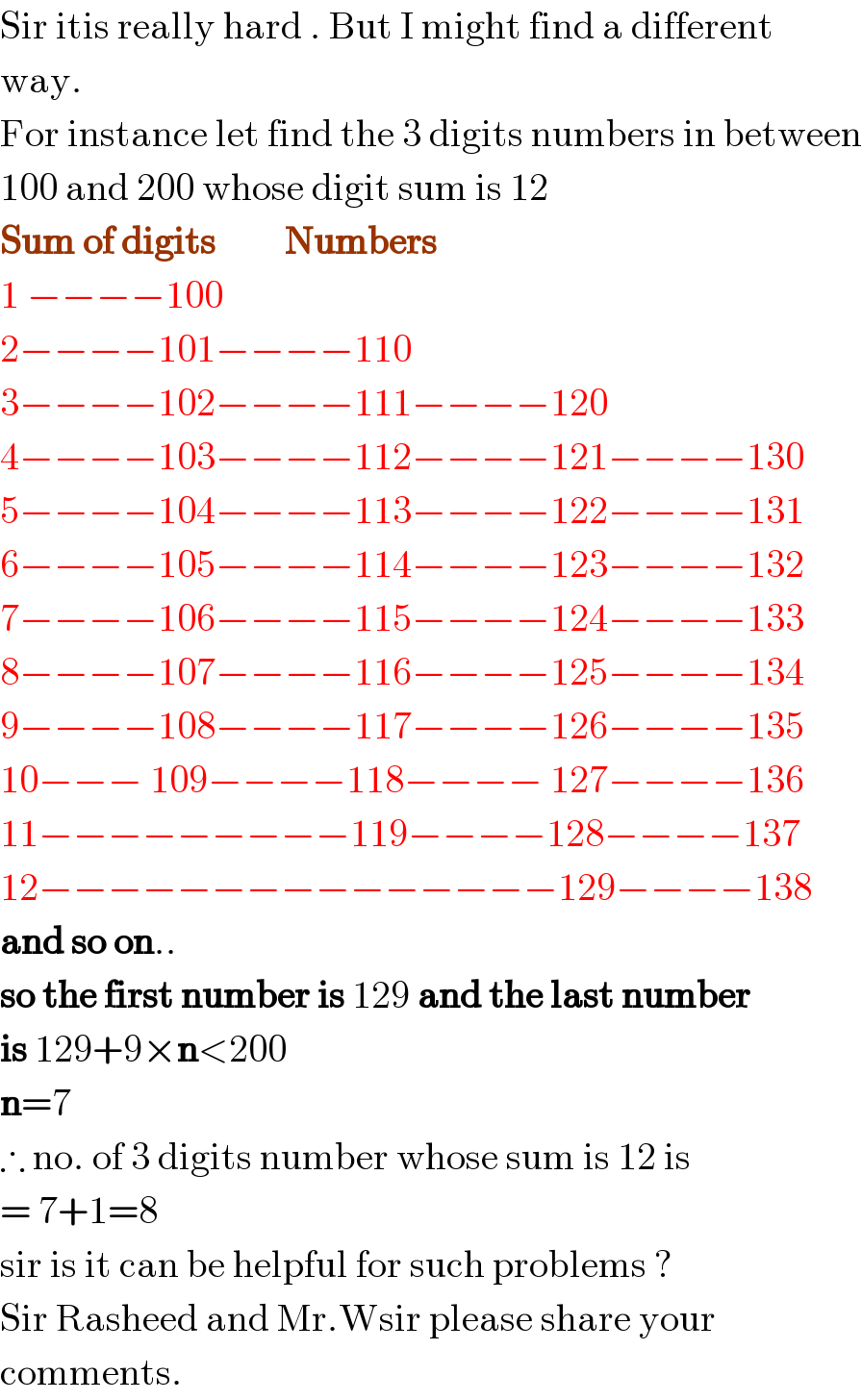
Commented by mr W last updated on 11/Jul/20

Commented by mr W last updated on 11/Jul/20

Commented by prakash jain last updated on 11/Jul/20

Commented by prakash jain last updated on 11/Jul/20

Commented by prakash jain last updated on 11/Jul/20

Commented by PRITHWISH SEN 2 last updated on 11/Jul/20

Commented by mr W last updated on 11/Jul/20

Commented by Rasheed.Sindhi last updated on 11/Jul/20

Commented by PRITHWISH SEN 2 last updated on 11/Jul/20
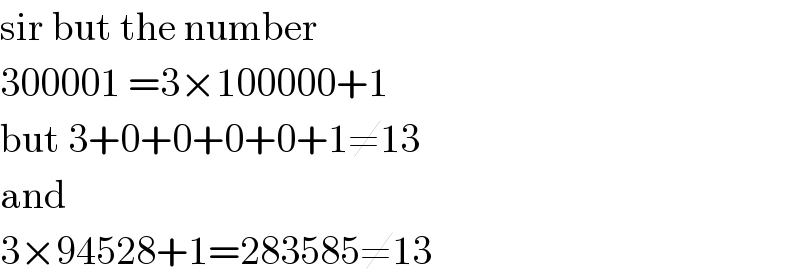
Commented by Rasheed.Sindhi last updated on 11/Jul/20

Commented by PRITHWISH SEN 2 last updated on 11/Jul/20
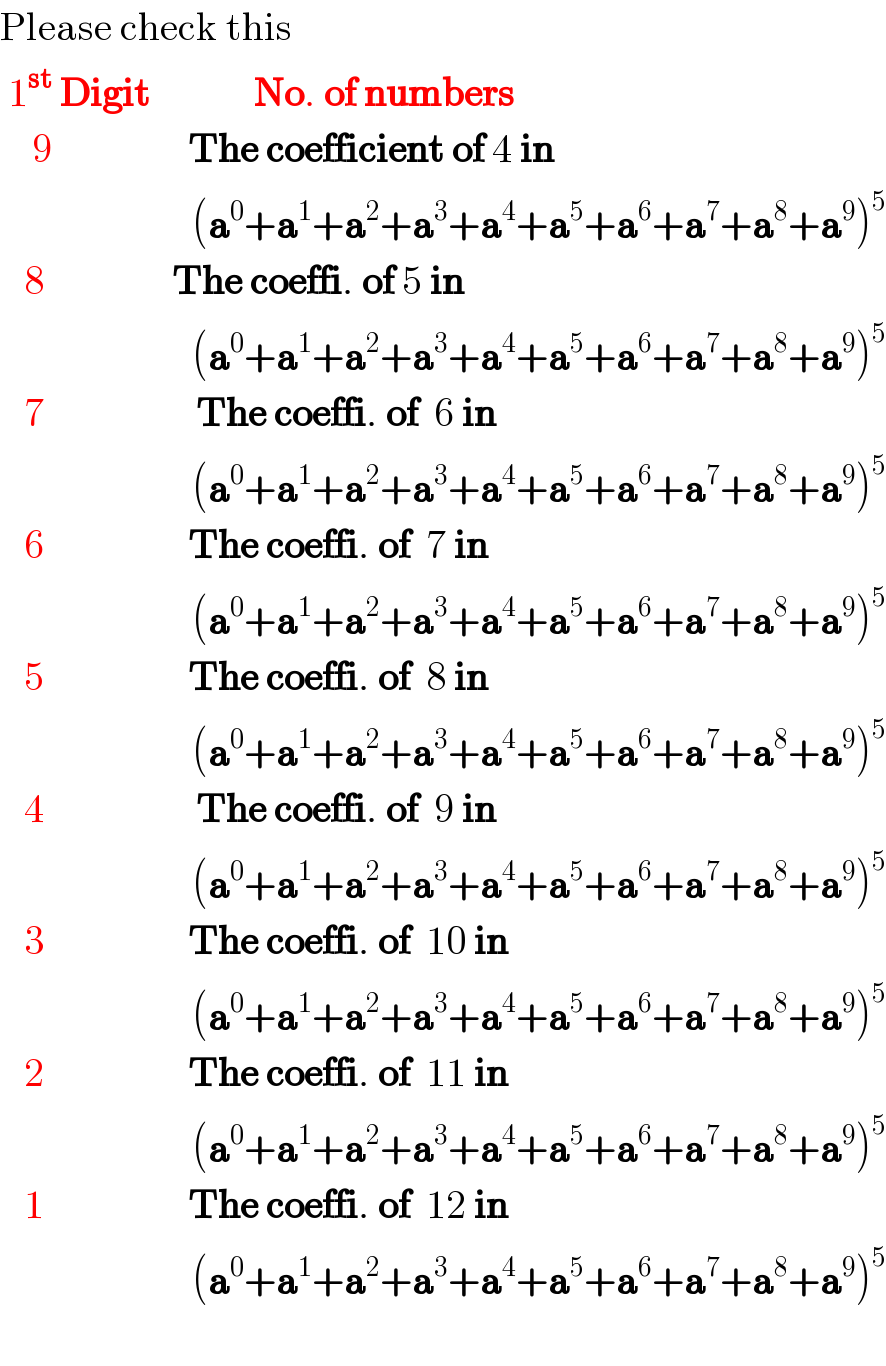
Commented by prakash jain last updated on 11/Jul/20
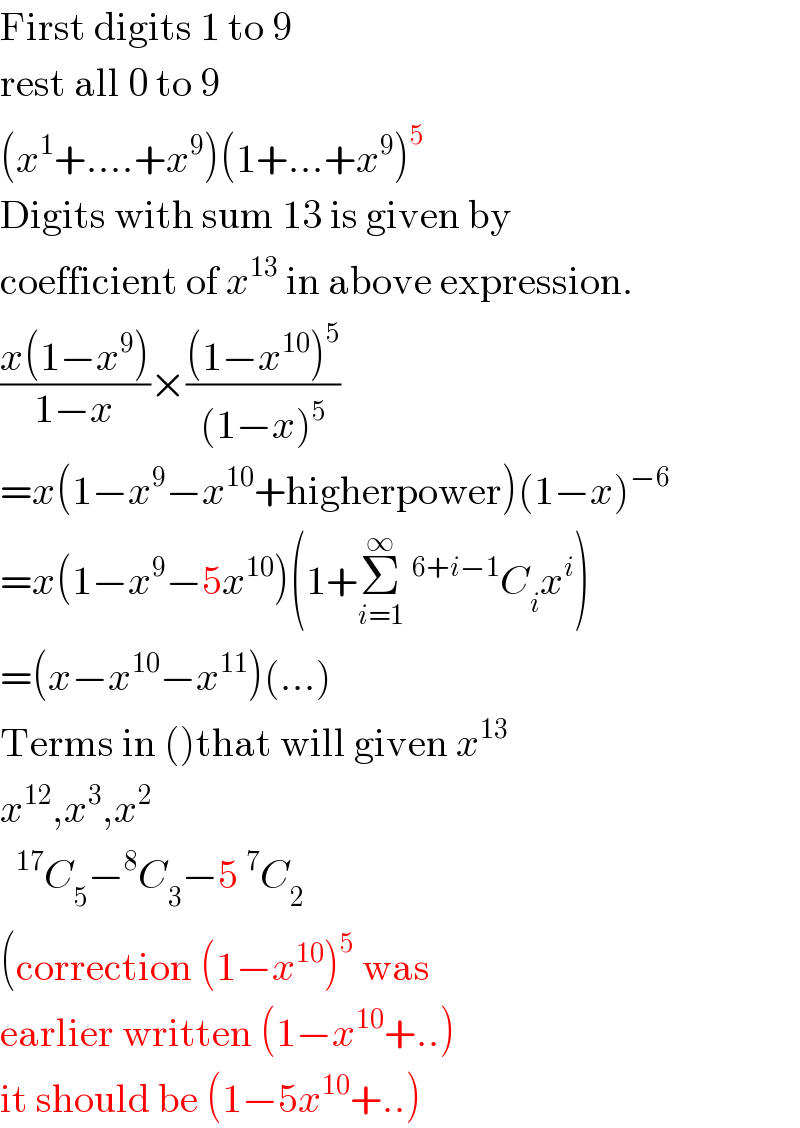
Commented by mr W last updated on 11/Jul/20

Commented by prakash jain last updated on 11/Jul/20

Commented by mr W last updated on 11/Jul/20

Commented by PRITHWISH SEN 2 last updated on 11/Jul/20

Commented by prakash jain last updated on 11/Jul/20

Commented by prakash jain last updated on 11/Jul/20

Answered by mr W last updated on 11/Jul/20
![let′s look at the general case: how many n digit numbers exist whose digits have exactly the sum m? say such a number is d_1 d_2 d_3 ...d_n with the conditions: 1≤d_1 ≤9 0≤d_2 ,d_3 ,...,d_n ≤9 so the question is how many integral solutions the following equation d_1 +d_2 +d_3 +...+d_n =m ...(I) has under the given conditions. we can use the generating functions for d_1 : x+x^2 +x^3 +...+x^9 for d_2 ,d_3 ,...,d_n : 1+x+x^2 +x^3 +...+x^9 for d_1 +d_2 +d_3 +...+d_n it is then (x+x^2 +x^3 +...+x^9 )(1+x+x^2 +x^3 +...+x^9 )^(n−1) =((x(1−x^9 )(1−x^(10) )^(n−1) )/((1−x)^n )) =x(1−x^9 )(1−x^(10) )^(n−1) Σ_(k=0) ^∞ C_(n−1) ^(k+n−1) x^k =x(1−x^9 )[Σ_(r=0) ^(n−1) (−1)^r C_r ^(n−1) x^(10r) ][Σ_(k=0) ^∞ C_(n−1) ^(k+n−1) x^k ] the coefficient of the x^m term in this generating function represents the number of solutions of eqn. (I). example: n=6, m=13 GF=x(1−x^9 )(1−5x^(10) +...)Σ_(k=0) ^∞ C_5 ^(k+5) x^k =x(1−x^9 −5x^(10) +...)Σ_(k=0) ^∞ C_5 ^(k+5) x^k coefficient of x^(13) term is (for k=12, 3, 2) C_5 ^(17) −C_5 ^8 −5C_5 ^7 =6027](Q102897.png)
Commented by PRITHWISH SEN 2 last updated on 11/Jul/20

Answered by prakash jain last updated on 11/Jul/20
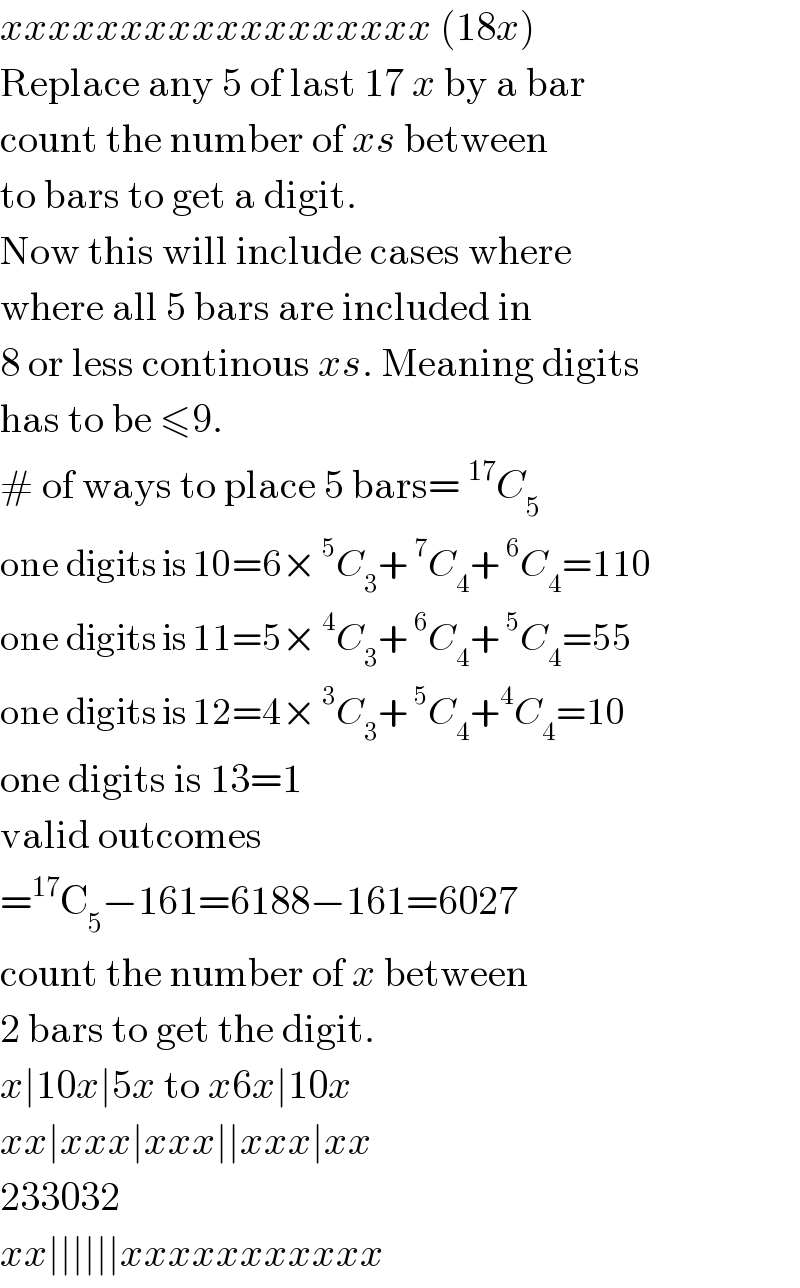
Commented by Rasheed.Sindhi last updated on 11/Jul/20

Commented by prakash jain last updated on 11/Jul/20
